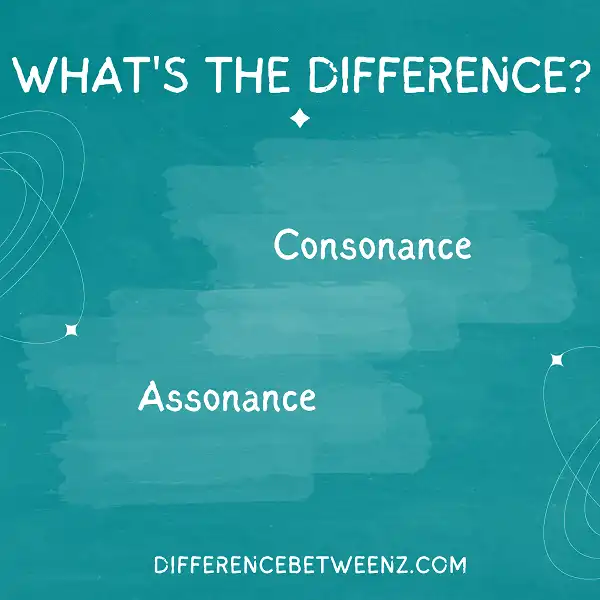Are you trying to perfect your writing style? Have you heard of consonance and assonance but aren’t sure which one is correct for the sentence or phrase that best reflects what you are trying to say? You’re not alone; understanding these important literary devices can be tricky. What’s even more challenging, however, is mastering their skillful use as sound effects within your writing. Keep reading; this blog post will explain the difference between consonance and assonance, their potential uses in creative compositions, plus provide examples so that you can better understand how each works.
What is Consonance?
Consonance is a literary device used to create a melodic effect using words that have similar or the same end consonants. Consonance often occurs when two words of contrasting lengths and meanings repeat their final consonant sounds in close proximity; by doing this, authors are able to create a subtle musicality and provide emphasis to certain words or concepts.
Consonance has been widely used in poetry and even dramatic works since effective use of it can lead to more powerful communication between the writer and the reader. Consonance is one of the numerous literary devices used to add impact and embellish a work’s overall tone.
What is Assonance?
Assonance is a literary device used to create rhythm and emphasis in a text. It occurs when two or more words that are close together have the same or similar vowel sounds, but different consonant sounds. Assonance can create a pleasing sound for readers and can be used as an effective tool for poetry and prose alike. It adds musical qualities to written works and can allow readers to read with a melodic beat. Assonance allows authors to add power and meaning to their writing, creating compelling stories that capture readers’ attention with every line.
Difference Between Consonance and Assonance
Consonance and assonance are poetic devices used in writing to create rhythm and sound effects.
- Consonance involves the repetition of consonant sounds, whereas assonance involves the repetition of vowel sounds.
- Consonance is a more prominent effect than assonance because it is easier to hear the similarity of consonant sounds at the ends of words.
- For example, “Big pig wig” is an example of consonance since the same consonant sound occurs at the end of each word.
- Assonance creates a softer effect than consonance, such as in “Lazy days breeze.” Here, all the words share the ‘e’ vowel sound at their end, making for a pleasant effect.
Consonance and assonance are fundamental tools for creating lyrical effects in writing and can be combined to create extended passages of pleasing poetry or prose.
Conclusion
Both consonance and assonance are powerful poetic devices that can create pleasing, musical effects in poetry. When used skillfully, they can contribute to the overall meaning of a poem by reinforcing the mood or creating a sense of atmosphere. Consonance is usually defined as the repetition of consonant sounds, while assonance is generally understood to be the repetition of vowel sounds. However, both terms can be used more broadly to refer to any kind of repeated sound, whether it be vowels, consonants, or even whole syllables. Ultimately, what matters most is not the technical definition but how these devices are used within a particular poem to create an effect that enhances the poet’s purpose.


